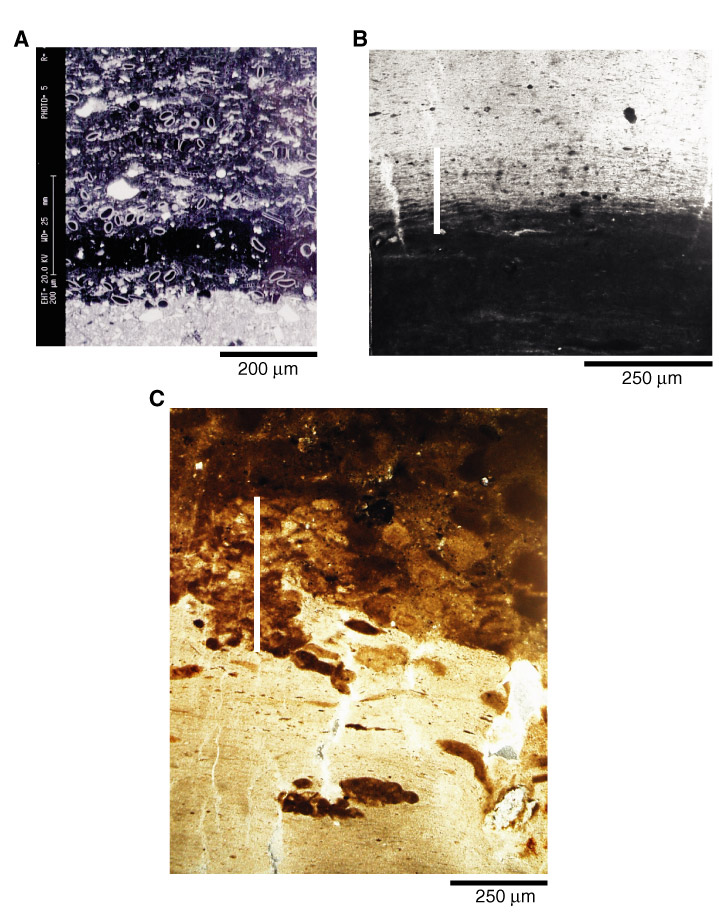Figure F3. A. BSEI micrograph showing bright, high-backscatter coefficient diatom-bearing terrigenous silt and clays overlain by darker, low-backscatter coefficient diatom ooze. Contact between laminations is very sharp (Sample 178-1098A-6H-3, 4.5-8 cm). B. Light microscope micrograph of opaque, diatom-bearing terrigenous lamina composed of silts and clays overlain by transparent diatom-ooze lamina. Contact between the two laminations is gradational over the region indicated by the white vertical line (Sample 178-1098A-6H-2, 127.3-131.6 cm). C. Light microscope micrograph showing transparent diatom-ooze lamina overlain by opaque diatom-bearing terrigenous silt and clays. Contact between the two laminations is bioturbated. Mixing of sediment at the boundary occurs across the distance marked by the vertical white line. Dark patches within the diatom ooze in the lower half of the micrograph are cross sections through deeper burrows where diatom-bearing terrigenous material has been taken down through the sediment. The mottled appearance of the upper, diatom-bearing terrigenous lamination is characteristic of bioturbation (Sample 178-1098A-6H-3, 50-54.5 cm).

![]()